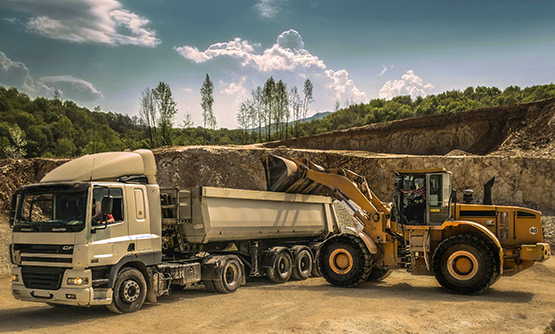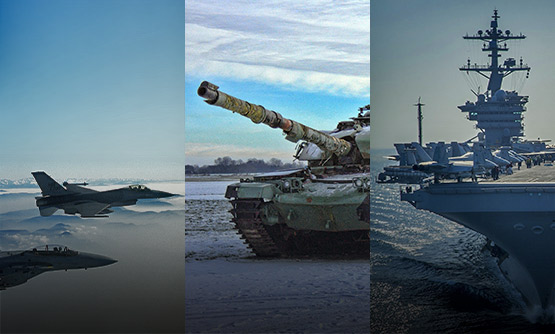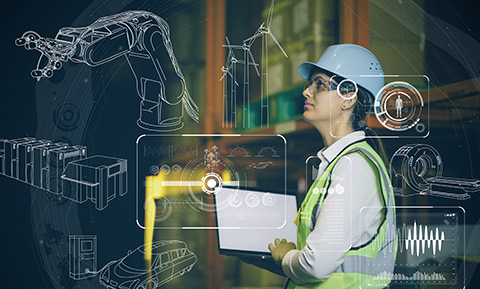In an interview with Automotive Products finder magazine, Sathyajith T.K, the Vice President of
Axiscades, talks about how electric vehicles will have a significantly lower overall part count as
compared to vehicles using internal combustion engines. Read the full interview here.
Q. What are key challenges faced by automakers when designing auto body?
One of the key challenges automakers face while designing auto body is the management of
multiple configurations which has an adverse impact on cost.
An interview with Automotive products finder magazine on electric vehicles.

There are also increased safety requirements and increased emission requirements which again have adverse cost impacts. In
a highly competitive auto market, cost is a very detrimental factor. Changes in technology and
homologation requirements also pose a challenge to auto body design when it comes to newer
technologies such as Electric Vehicles. Light weighting and standardization is also a key factor
to be considered in auto body design.
Q. Automotive body design involves not just designing of new concepts but also the designing
of processes of production. Taking into account these aspects, what kind of solutions/services
do you offer to auto industry for body designing & manufacturing?
We offer a wide range of services to the auto industry, starting right from concept designing
stage to the continuous manufacturing support. We provide design and validation services
which include CAD and CAE for various automotive structures and components. Our expertise
also covers design and development of various automotive systems. We support manufacturing
through tooling services which includes Jig/Fixture design, CNC programming etc and also
provide Manufacturing Engineering Services (MES). Our MES services include a wide range of
solutions such as assembly process design, facility design, assembly validation and simulation,
supply chain support and part manufacturing support. We also provide prototype development
services and limited batch production of components. Additionally, we also provide value
engineering solutions and support international OEMs develop and establish a local supply
chain.
Q. Electric vehicles (EV) are coming up in big way. How EV body will be different from vehicles
using Internal Combustion Engine (ICE)?
Electric vehicles will have a significantly lower overall part count when compared to vehicles
using internal combustion engines. Also other significant difference will arise from the fact that
the battery pack would be heavier than an engine for similar vehicle performance and the
battery pack would also need to be more protected due to crash safety considerations. It would
also have a much more compact drive system.
So in general, an EV body will be a better optimized design, with more free space, with the
battery pack situated increasingly on the vehicle floor. The occupants would generally have a
higher seating position with additional luggage storage options.
Q. What key changes need to be made in body designing & manufacturing for EVs (which will
be different from vehicles using ICE)?
Lightweight materials are likely to be extensively used in the BIW of an EV. Usage of such
materials for eg. Aluminium alloys or composites will lead to various changes in joining
technologies (Welding, riveting, etc.). This will have a cascading effect on all sub processes and
design of the manufacturing set up & supply chain. Due to the fact that the batteries may be
placed underneath the floor of the vehicle for safety purposes, and lack of a large transmission
system, EV body design will have changes in ergonomics in general, with much more design
possibilities. Since the number of components will be reduced, and the battery performance
optimization, motor controls etc. will be computer controlled, the assembly may be based on
modularized subsystems, leading to overall simplification of the manufacturing process.
Q. Automotive industry is highly competitive forcing auto makers to bring new vehicles. How is
your company helping automakers in body design and fastening development process of new
vehicle?
We are able to support all aspects of automotive design and manufacture with a very quick
turnaround time. Our agile and flexible workforce can be redeployed at the shortest possible
notice and support diverse activities across the value chain, right from new product
implementation (NPI) to value engineering studies on existing products. Our services help the
automotive industry meet the schedule and cost challenges and deliver significant value to their
customers.
Passive Safety
Q. What is driving the demand for passive safety systems in India?
In the highly competitive automotive market, passive safety systems are becoming the major
differentiator/USP for automobiles. There is also an increased awareness of the consumer
which is contributing to increased demand for passive safety systems in India. The new
mandatory requirements in homologation, safety standards and regulation from the Govt of
India are also driving this demand. Clear examples can be seen in the mandate for usage of
seatbelts. Customers are also clearly preferring vehicles with more airbags and safety features
and vehicle safety ratings are more popular than ever before. Further passive safety systems
are becoming more affordable which is also leading to a wider implementation of these features,
across multiple models.
Q. How is your company helping auto OEMs to make their vehicles safer?
AXISCADES has contributed to various passive safety systems designs for global OEMs. We
also perform advanced virtual simulations on crash, NVH and other safety parameters. We are
able to support design, virtual validation and deployment of passive safety systems across a
wide variety of automobiles. We also develop multiple solutions in embedded electronics sphere
which can provide passive safety for the occupants. Further we are also developing radar based
solutions which can provide collision avoidance.
Q. What solutions do you offer in passive safety systems space?
We offer the following solutions
1. Design support of passive safety systems.
2. Linear and Nonlinear analyses & field validation support for passive safety systems.
3. Embedded solutions in the area of passive safety systems
4. Radar based solutions for collision avoidance/automatic navigation
Q. What kind of new trends are you seeing in passive safety systems space?
Passive safety systems are being used as a differentiator, and each new model coming out is
having more of these systems incorporated. There is a definite increasing trend of the usage of
passive safety systems. More sophistication is being added into existing systems, and even
lower end automobiles are coming up with more and more of these systems installed. Multiple
Airbags (head, knee), adjustable seat belts etc are clear examples. There is also a trend for
usage of embedded electronics to provide passive safety; examples being seat belt reminders,
speed limiting beeps, tire pressure indicators, lane change warnings etc. Introduction of EVs will
also lead to improvements in body structure, especially revolving around protecting the battery
in case of a crash. The worldwide trend of autonomous driving is also shaping the passive
safety system trends in terms of usage of radars and cameras with high level of inbuilt
computing power to provide maximum safety to the occupants of an automobile.
Q. How important is to consider the “passive safety system” requirement of the vehicle while
designing a car?
With the current market trends and increased public awareness, passive safety systems are
equally important as active safety systems while designing a car. It has become an absolute
requirement in BIW design as the crash safety of structure is a design driving factor. The
amount of safety a car can provide to its occupants is a key factor deciding the sell ability of the
car. Also the safety electronic features act as key differentiators. So an automaker has to
consider passive safety systems right from the early design stage itself to ensure a successful
product.













